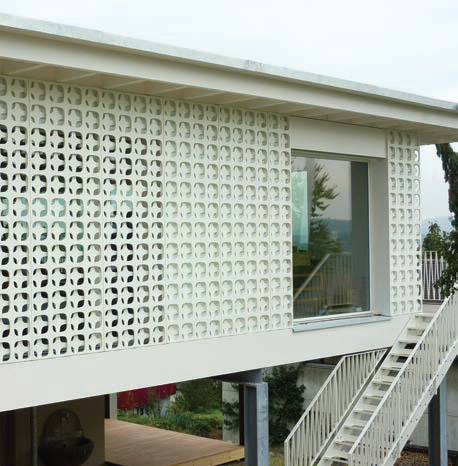Modified wood In panels – Where next?
31 January 2020Dr Morwenna Spear of the BioComposites Centre in Bangor looks at the potential for panel products made from modified wood fibre
Back in 2012 many in the industry were intrigued, curious and possibly sceptical about the launch of a waterproof MDF product. Now, as sales of this hi-tech material have stabilised (manufactured by MEDITE SMARTPLY under the name MEDITE TRICOYA EXTREME, or MTX) and as we eagerly await the commissioning of the wood chip acetylation plant in Hull later in 2020, it is time to reflect that, yes, perhaps this miracle product really does deliver exceptional properties. Others have shown interest in production, for example Finsa ran trials for manufacture to supply the Spain/Portugal region in 2019. With the first commercial production from Hull anticipated in the 2020-2021 business year, it is certain we will see greater quantities on the market.
It is also time to ask “Is acetylation the only viable wood modification for the panels industry?” In solid timber there are several distinct wood modification technologies – thermal modification, chemical modification (including acetylation and others), and resin or polymer modification. Is it possible that these could offer new properties to wood panels? Or lead to competition for Tricoya in future?
Many may not realise that acetylated fibreboards aren’t the first modified wood in the panels industry. Many decades earlier, Alfred Stamm of the Forest Products Lab (US) worked on a resin impregnated plywood product named ‘Compreg’, seeing it as the way to overcome poor permeability of resin to the core of solid wood. Permeability is a key issue in many wood modification technologies. The veneers were easily impregnated, then assembled and compressed to a greater or lesser degree, to form an incredibly strong, durable product, which had low moisture uptake as an additional benefit. Various forms of this technology have survived and been reinvented over time, becoming specialist products with diverse uses, for example, neutron shielding, motorsport, engineering and flooring. However, it is often ignored within the wood based panels sector.
What about thermal modification? At various conferences over the past decade I have seen researchers present concepts based on using thermally modified wood chips, veneers or occasionally wood fibre to form particleboard, plywood or MDF.
Technically this is possible, although the brittleness arising from wood modification processes often leads to issues in manufacture or poor product performance.
For example, in the particleboard and fibreboard products, compression and flexibility of the particles during hot pressing is a central requirement of the process, ensuring good particle-to-particle contact and efficient load transfer for good internal bond strength performance. A brittle furnish of thermally modified wood particles may reduce this capability, and if excess pressure is applied to compensate for this, may lead to fracture rather than compression of the particles, unless conditions are carefully controlled.
An alternative approach taken by some researchers has been to take the factory finished particleboard, plywood or fibreboard, then conduct a heat treatment schedule on it. This is also not without its technical pitfalls, including post cure and brittleness of resin, distortion or stress development within the panel, and poor surface to core thermal transfer.
The fundamental question when doing wood modification is always “What properties of the wood am I seeking to enhance?” The answer is frequently to reduce water uptake. Sometimes it is also to improve wood durability (to fungi, termites or other biotic factors). Occasionally it is to enhance strength, hardness, toughness or other mechanical properties. Each of the main technologies has its strengths in these areas, or may have limitations.
The same question can be applied for modified woods in panels. The main area for property enhancement is reduction of water uptake. And here the acetylated fibres of Tricoya excel, with an exceptionally low equilibrium moisture content, sufficient to inhibit swelling when the panel becomes wet, and reduce strain on coatings while also reducing risk of decay. Innovators will continue to look to enhance other properties, and may find specialist markets, such as those already occupied by Permali, Jabroc and Insulam.
